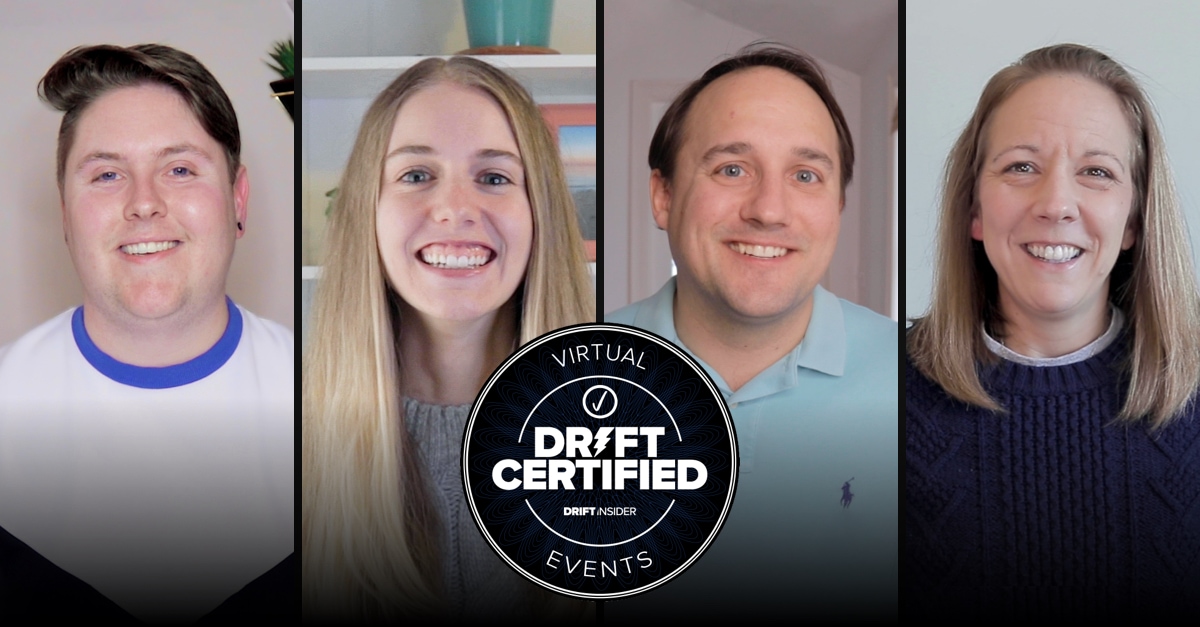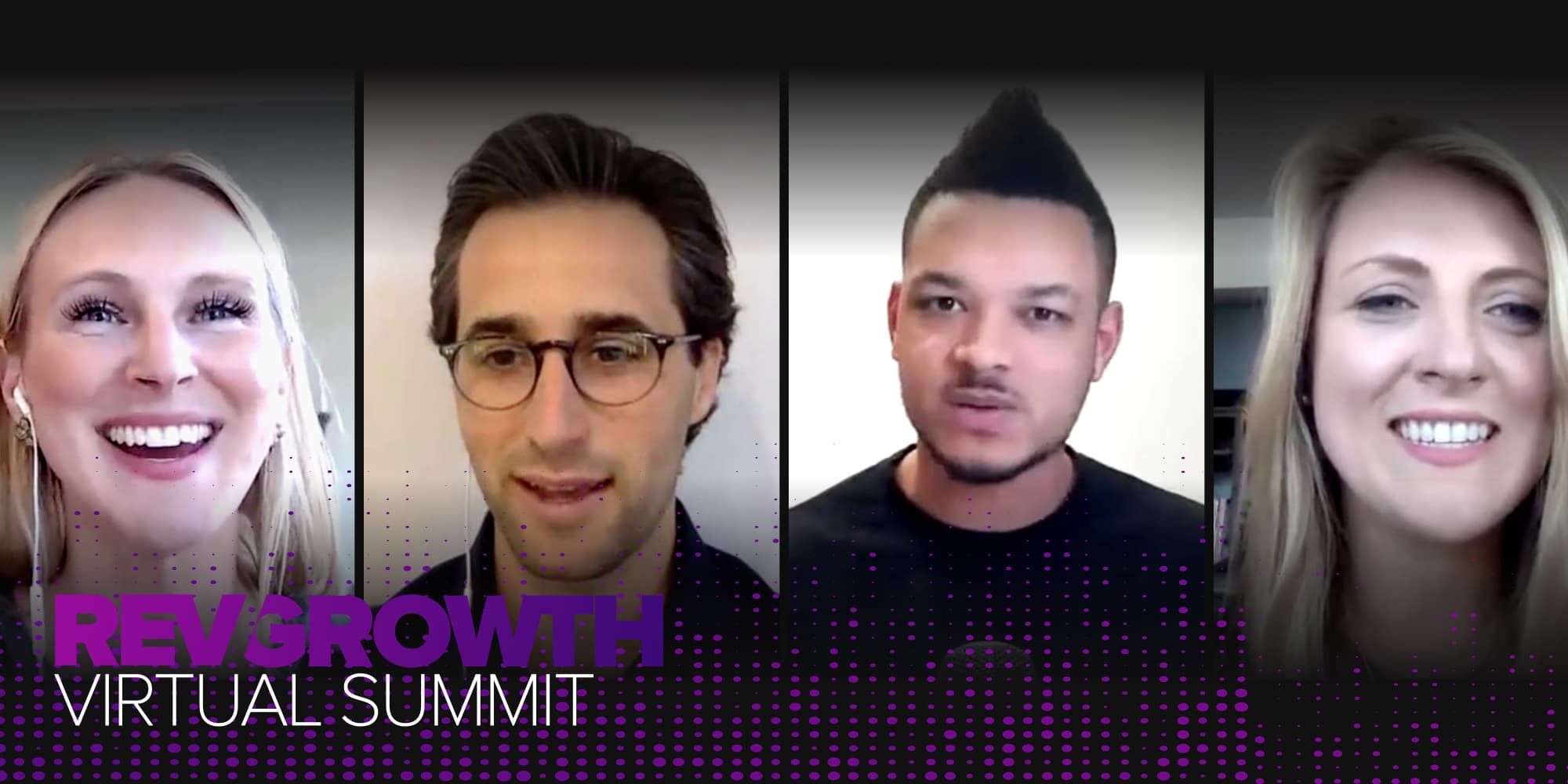I remember the day we learned all of our in-person events were canceled for the foreseeable future.
Since 90% of what my field and partner marketing team at Adobe does is in-person events, we knew we needed to pivot.
via GIPHY
With all of our events going virtual, we had to ask ourselves how not just to fill the gap, but also how to create really cool experiences that were as close to in-person as we could possibly get. We wanted to make sure our customers and partners felt that we were all in this together.
So we decided to approach our virtual event strategy with the same mentality as our live events. Here are my five pro-tips any event marketer can use to have the best virtual events ever.
5 Pro-Tips for the Best Virtual Event Ever
We did a few smaller events, but we went big with Experience Makers Live in July 2020, an event with 25,000+ registrants (and 14,000+ attendees!) dedicated to leadership and the shift to digital we were all experiencing.
1. Make it an Experience
By definition, an “experience” requires engaging as many sensory elements as possible. Even though the content would be streamed, there was no reason not to include some IRL elements in the planning.
The answer? Direct mail.
Sending swag bags, t-shirts, and other goodies is just the start to make an event feel special. We decided to add experiential elements by mailing DIY kits – for example, adding on a cocktail-making class where we sent the ingredients and tools in advance, a celebrity chef-run cupcake-making workshop, and a tie-dye tutorial.
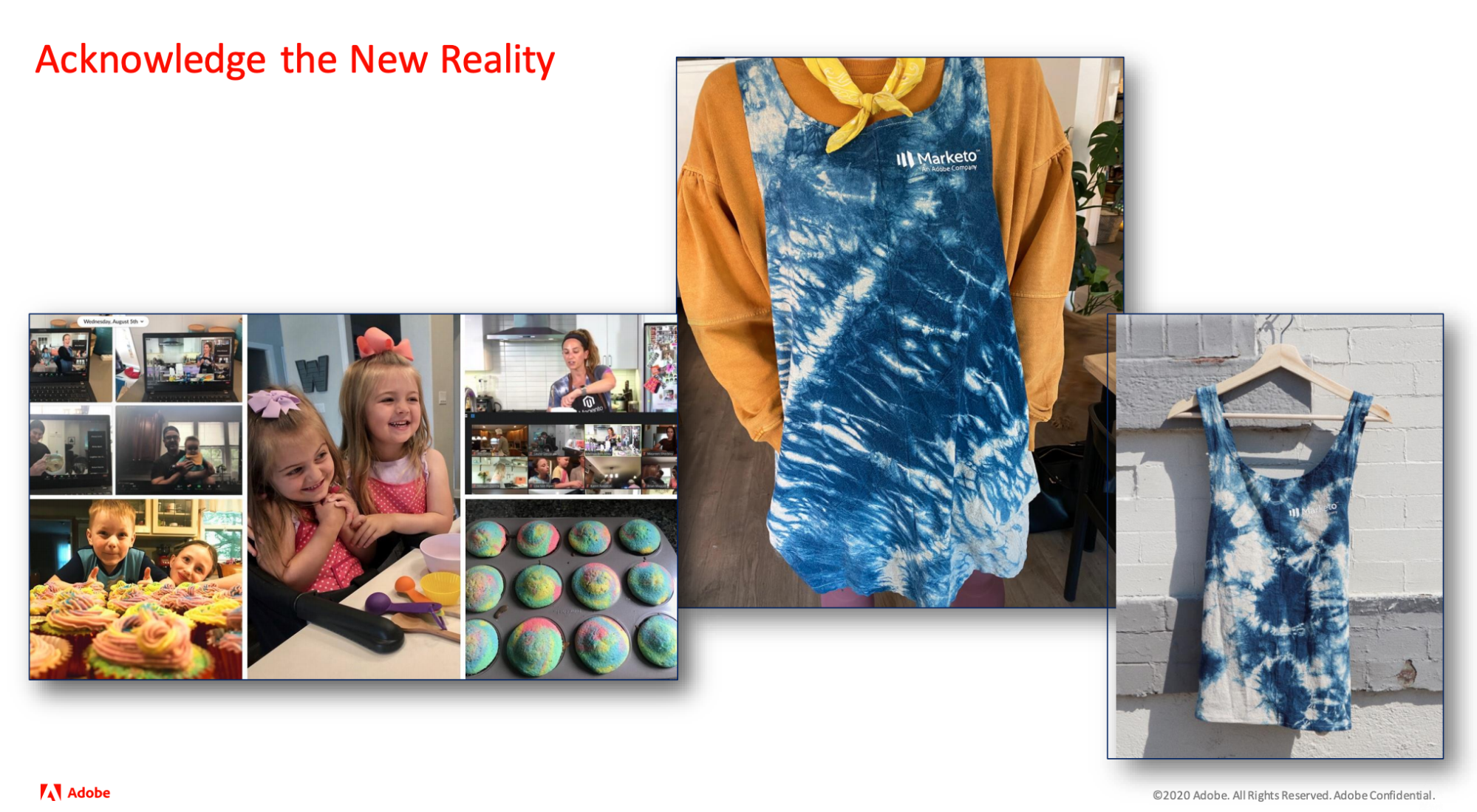
Look, nothing about quarantine has felt “normal.” Rather than trying to emulate what could have been, we decided to acknowledge it and lean into the different aspects of life at home. Even though everyone was in their own homes, it still felt like we were all together experiencing this event.
(Plus, direct mail helped with attrition and engagement – once someone was registered, they received a package. Who doesn’t love getting a package?)
2. Focus on Customer-Driven Content
With virtual events, you’re competing with so many more distractions. The best kind of virtual event you can create is focused on customer-driven content.
That means choosing speakers who were going to be real and honest about what’s going on in the world, looking to share their stories and wisdom – not make a sale. To truly create a community-focused agenda, we turned, naturally, to the community.

Your customers say it best. They just do. They’re a part of the community your brand has built, so not only are they more credible and relatable, but they’re also the peers of your attendees – making it that much more accessible to learn. They know your customers better than anybody…because they are your customers.
That’s why at least 75% of your speakers should be customers.
…But Don’t Forget Fresh Perspectives
For the other 25%, make sure you’re including people outside your community.
Yes, yes, I know – I just told you to go for community-focused speakers. But hear me out. Whether they’re a celebrity or a major thought leader, bringing in an outside speaker can add a fresh perspective that ties the rest of your content together.
Choose a speaker that matches the overarching message of your event. We brought in Luvvie Ajayi and Brené Brown at Experience Makers because both of them have honest, unapologetic stories about how to believe in yourself and make yourself better, which was the core message of the event.
Having outside speakers can give your event a little more oomph to drive registrations, too. We saw a huge uptake when we announced these speakers – they’re well-known, yes, but they’re also speakers our community wanted to learn from.
Led by event experts and grounded in real-world examples, Drift’s brand new Virtual Events Certification will guide you through actionable strategies you can implement today. Pre-register to save your spot now.

3. Create Interactive Moments
What I miss the most about in-person events are the chance meetings you have with people. You know, when you go to a trade show and you’re waiting in line for coffee, and so you strike up a conversation with the person in front of you – which can turn into a great business partnership.
While we can’t create true serendipity online, you can use different technologies to create interactive moments between speakers and attendees or amongst your attendees themselves. Here are five ways to do it:
- Polls can break up a session and give speakers a chance to take the temperature of the audience on certain topics, as well as tweak their content based on what people need in real-time.
- Chats can give the audience a chance to ask questions, share their stories, or meet other attendees.
- Virtual breakout rooms focused around key topics, partners, or experts give people a chance to drop in and have more casual conversations and engage with one another.
- Gamification increases engagement by tying points into different activities, such as listening to sessions, entering a networking lounge, or asking questions. Rather than give a prize away, we donated a certain amount to charity based on their activity, with three different charities to choose from.
- Live Q&A makes the event feel more real, even if the sessions themselves are pre-recorded.
To make this work, open up your platform a few days in advance so your attendees can get in there and feel comfortable with it. The more your attendees understand how things work, the more they can get out of the sessions themselves.
4. Build Consumable Agendas
Whether it was a session or whether it was simply going into a networking lounge and asking a question, we wanted everybody to be able to feel like they were part of the event, no matter how much time they had to dedicate to it.
A typical conference often has 45-minute or longer sessions, and we knew that just wasn’t going to work in an online format. On average, by using Adobe Analytics we’ve found that virtual event attendees only watch about 17 minutes of a session before leaving, so we built our agenda around the fact that most people can’t sit still in front of a computer for the entire day. For our agenda…
- We split the sessions into two days, each as a half day
- Every session was no longer than 15 minutes, with optional Q&A after
- Keynotes were no more than 20 minutes
- We built breaks in-between each session (more on that later)
- All sessions were available on-demand afterward
That way, if an attendee could only come for 20 minutes in between meetings, or needed the afternoon to finish work or help their kids with schoolwork, it didn’t matter. They’d still be able to access the content on-demand or schedule their day based on what worked for them.
5. Capture the Fun
The reason events work as marketing and sales tools is because they are fun.
You’ve got concerts, comedians, entertainment, free food and drinks, epic venues…the best events are unforgettable not just because of what you learn or the people you meet, but the memories you make. That goes for the glamorous – like meeting a celebrity at a VIP meet and greet – to the not so glamorous – like most event marketers, my favorite parts about working events are the hours spent in the war rooms with all the folks that have been tirelessly giving their all to make sure things go off without a hitch.
If there’s one thing people need right now, it’s a little bit more fun in their lives. For virtual events to be successful, they have to have that extra-special element of fun.
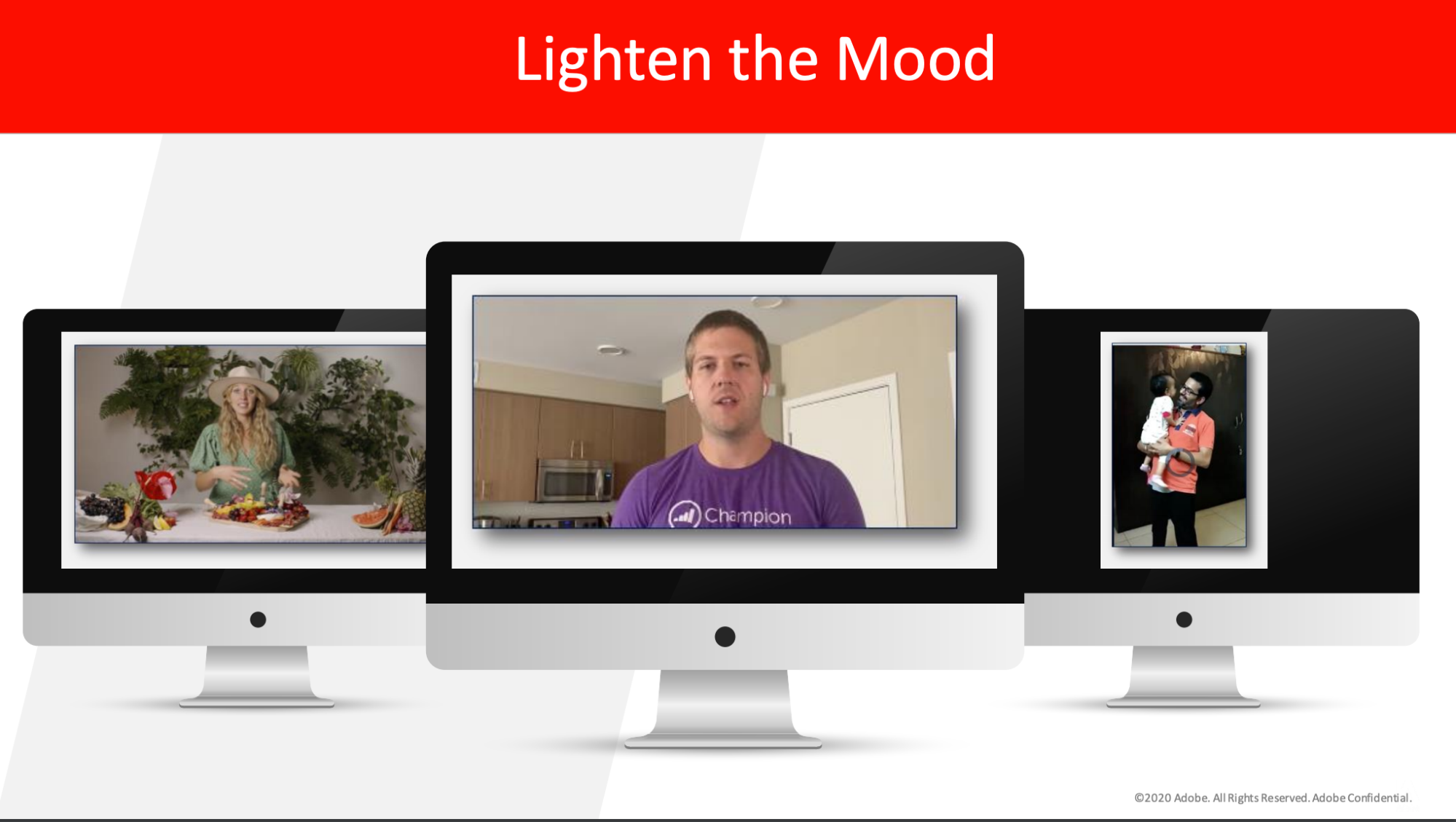
We did this in two ways:
- Programming lighthearted lifestyle breaks, like offering a charcuterie board tutorial and a how-to session on building a living wall.
- Playing interstitial videos after the live Q&As ended to bring a little humor. We asked employees and partners to put together short, 30-second videos that addressed different topics like work-from-home fails.
No matter what your topic, there are always ways to make things a little lighter.
6 Things I Learned at Our First BIG Virtual Event
Like any event planning, we had some ups and downs. But here’s what I learned in the course of putting together our first big virtual event.
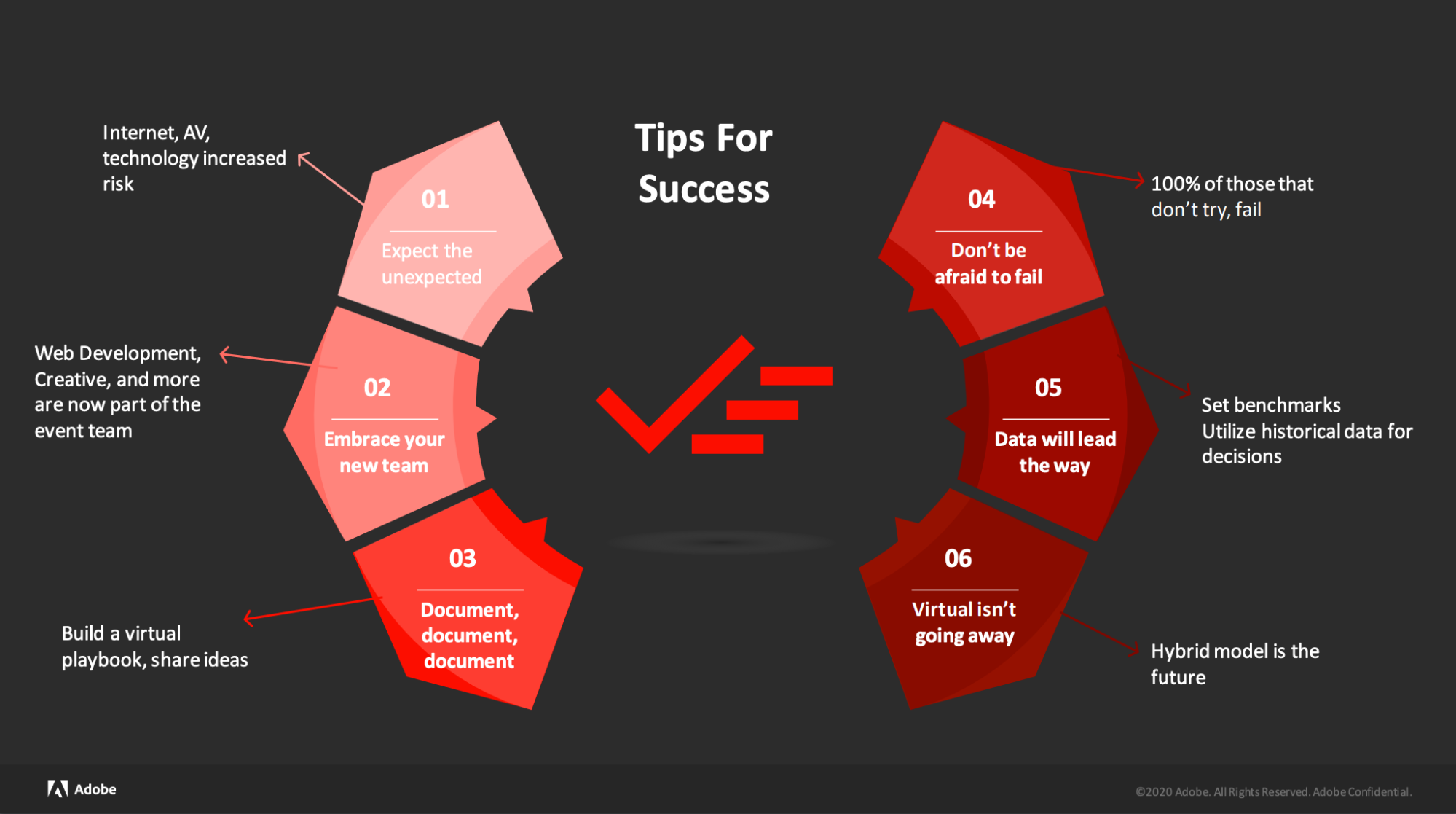
- Expect the unexpected. You always have to have a plan B (or as my team says, an A, B, and C plan.)
- Embrace your new team. Now that events have gone virtual, I’m working with so many new departments, like our web team. You’ve got a lot of moving parts – you can use all the help you can get!
- Document everything. Build a playbook and share ideas across your organization so that virtual events can work for everyone.
- Don’t be afraid to fail. Technological difficulties, last-minute no-shows, long-winded speakers…if you’ve planned an event, you’ve seen it all. Try something new and unexpected, and you’ll learn something in the process.
- Data will lead the way. Virtual events are new, so it may feel like you’re making decisions without all the information you need. That’s ok. Set up your first event and use it as a baseline, and use what you know from in-person events and other programs.
- Virtual is not going away. Even when we can have in-person events again, life will look very different. Embrace hybrid and virtual scenarios in your strategic planning, and events will continue to evolve.
And that, as we say in the event business, is a wrap 💥
Caroline Hull is the Director, Americas Segment Marketing at Adobe.







